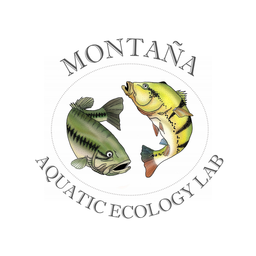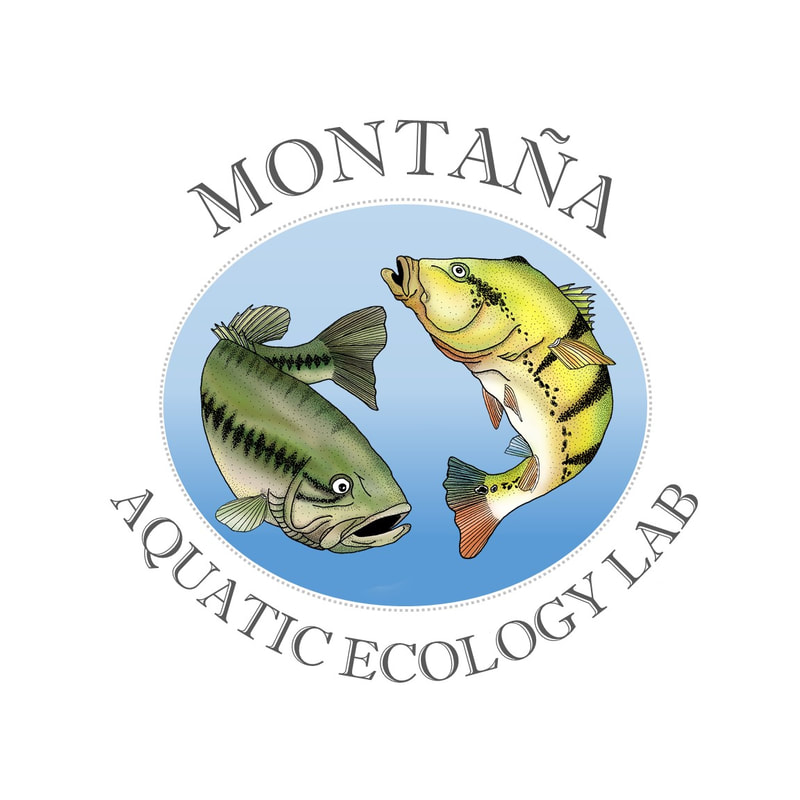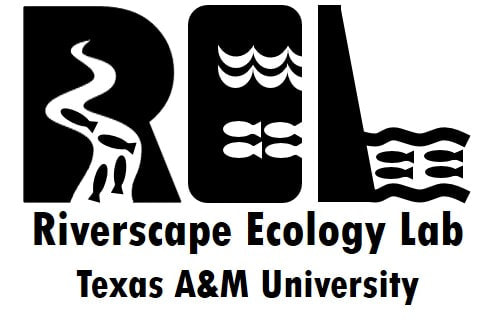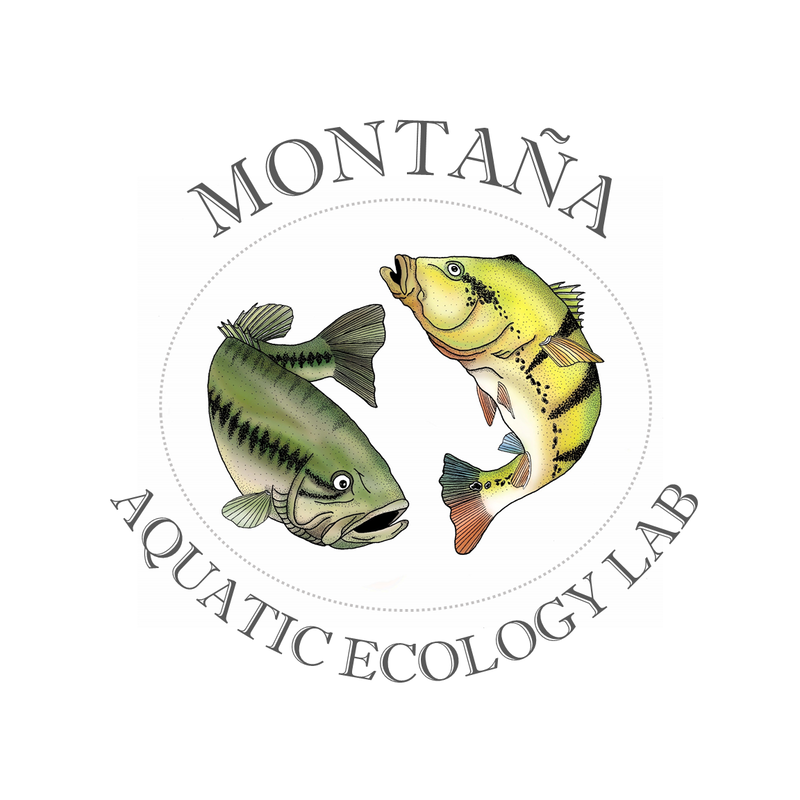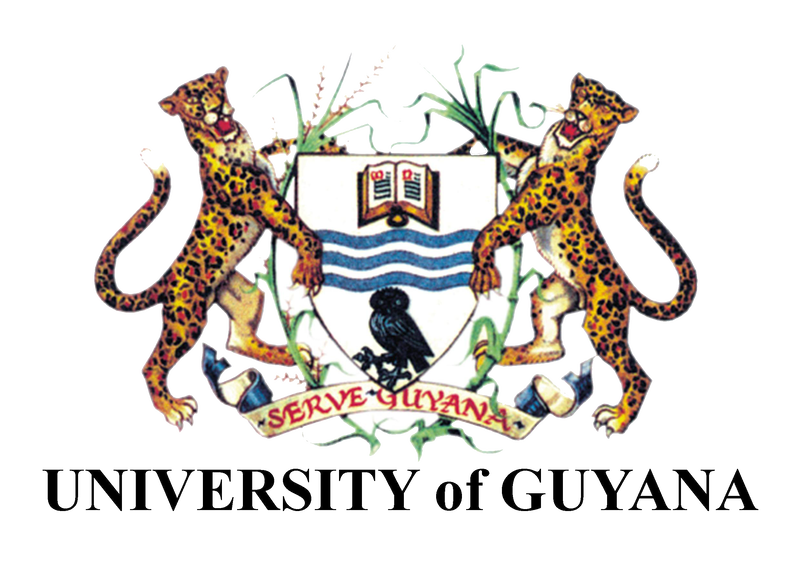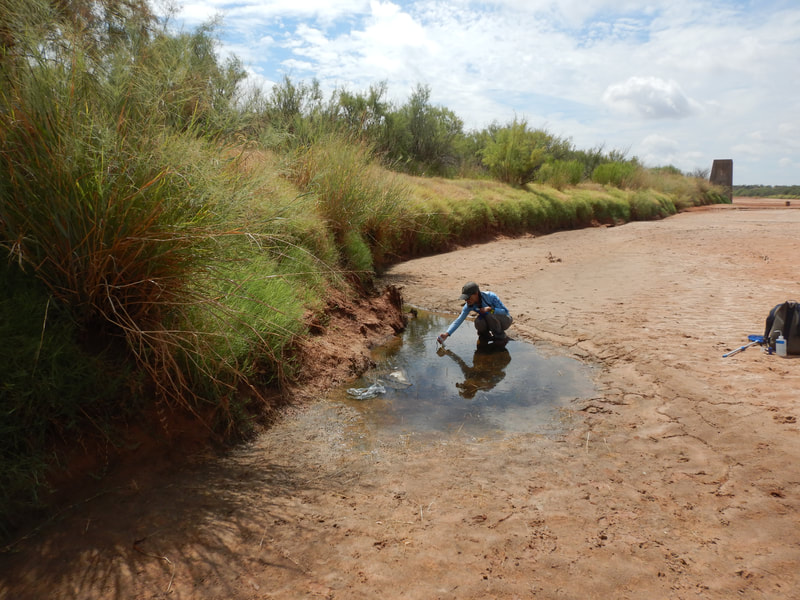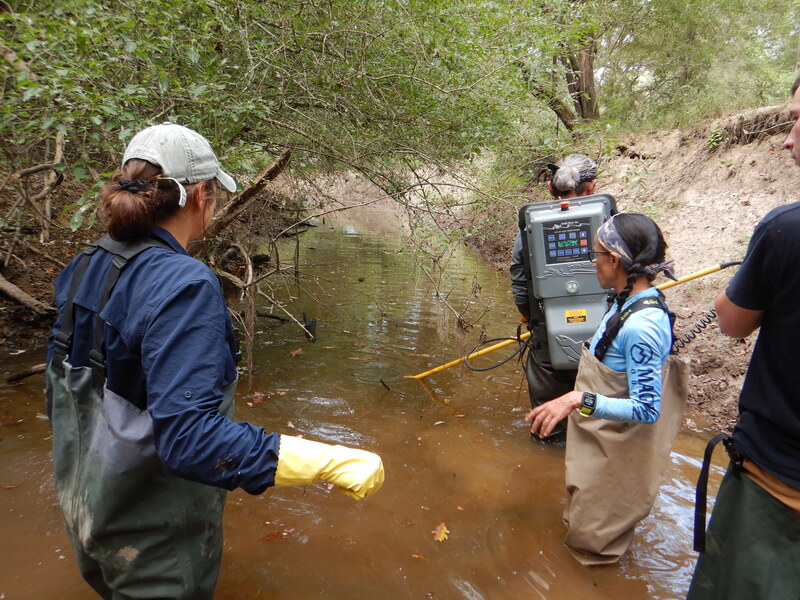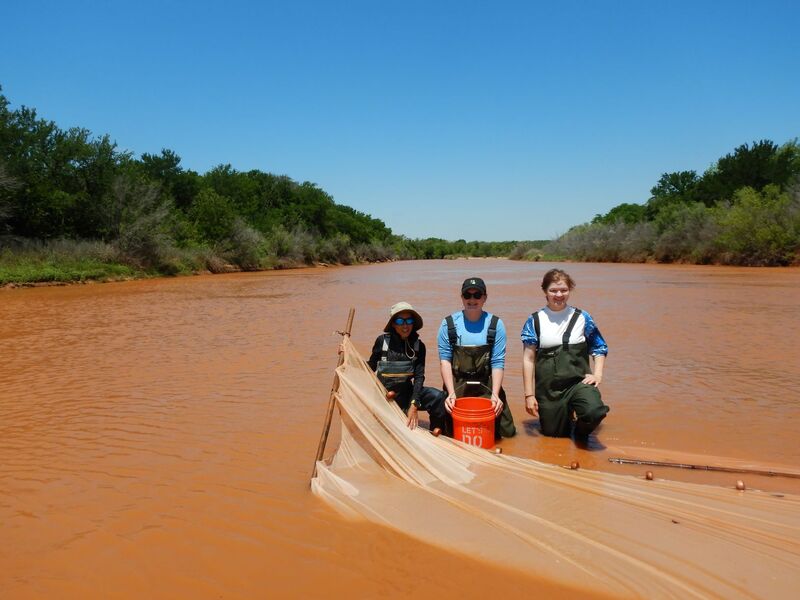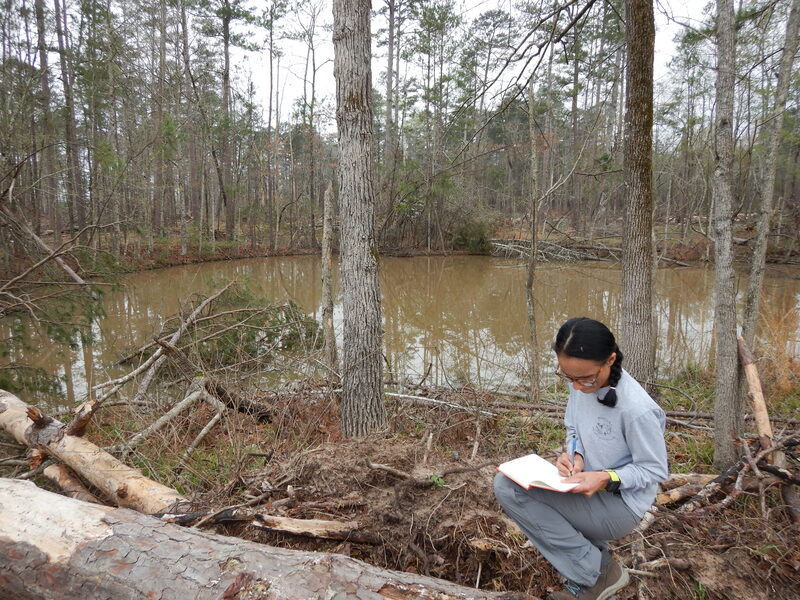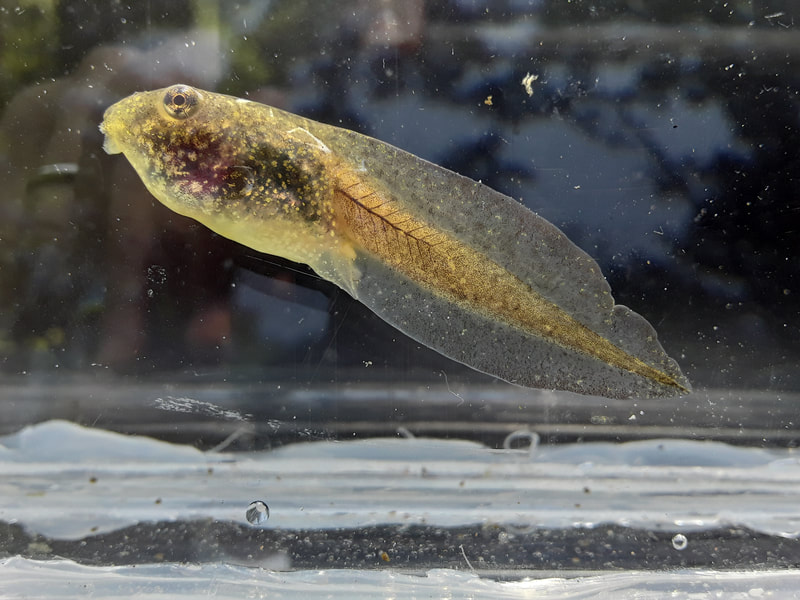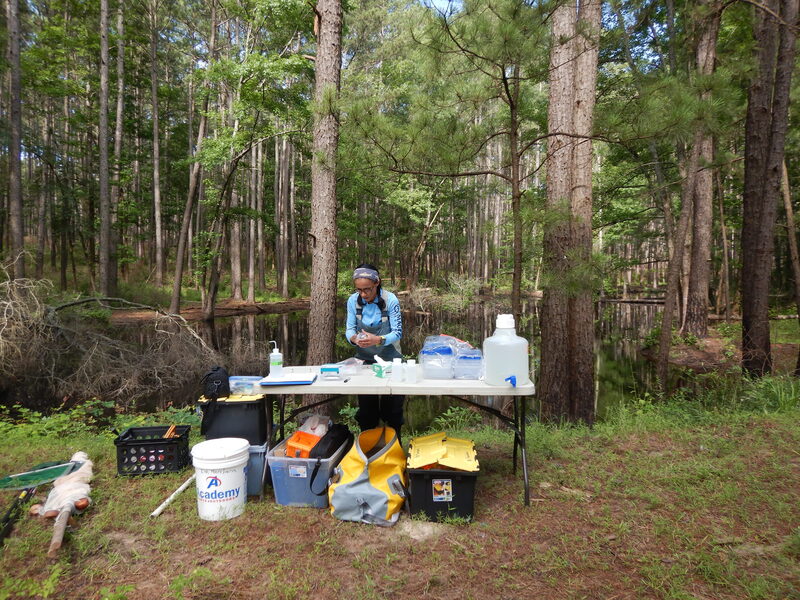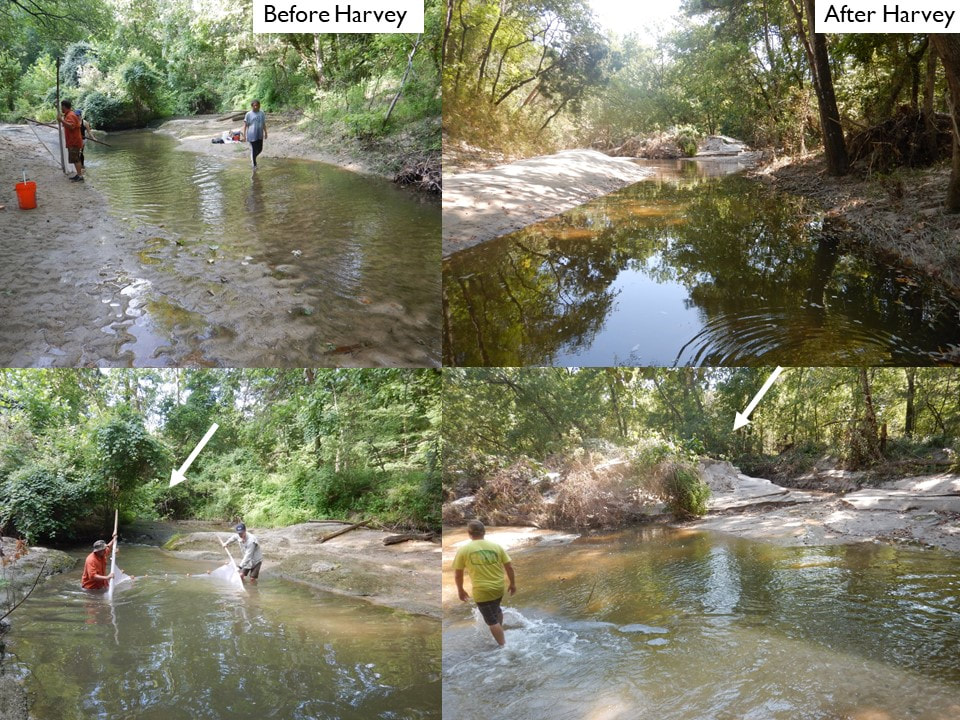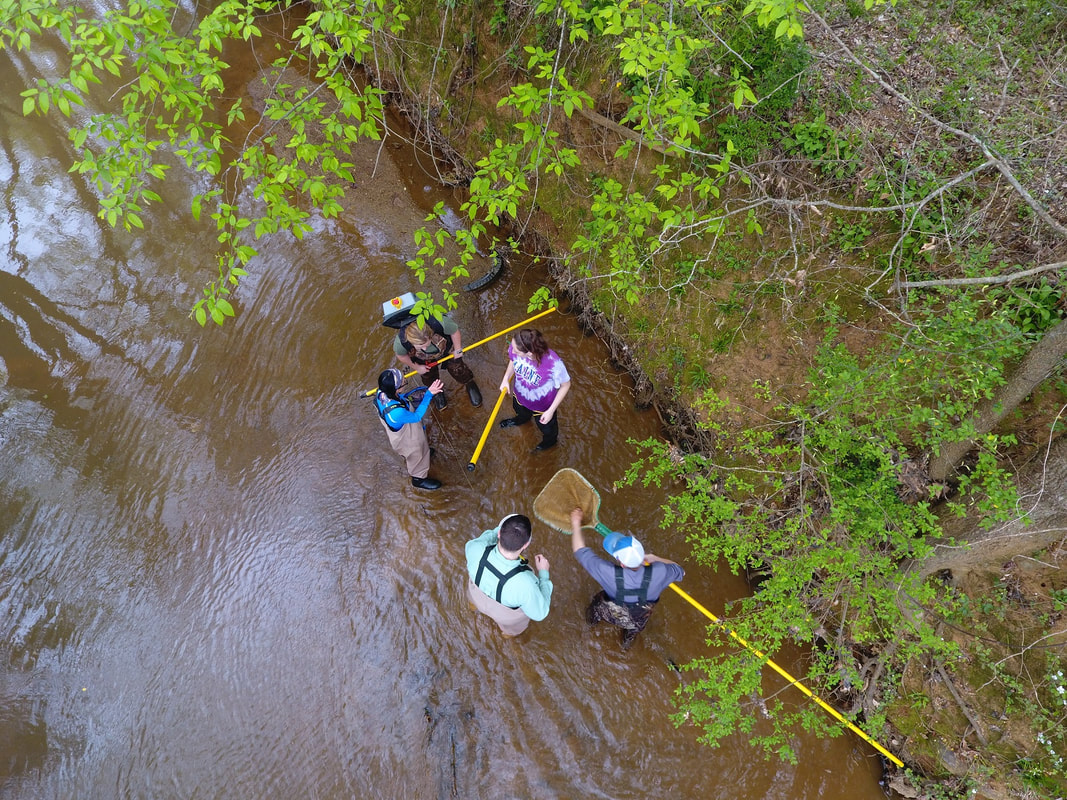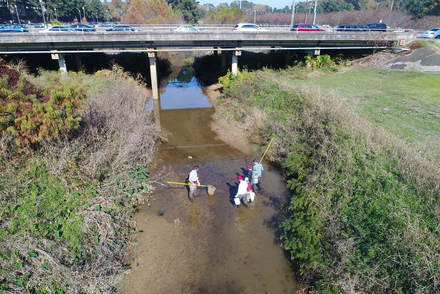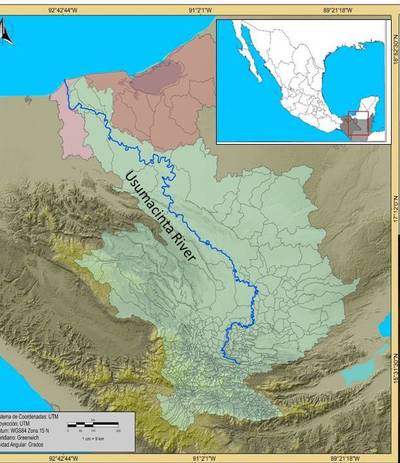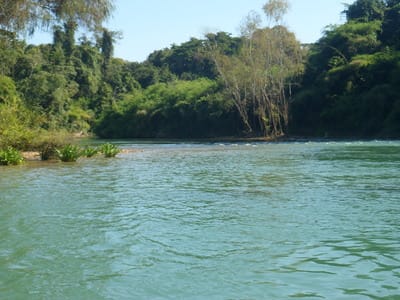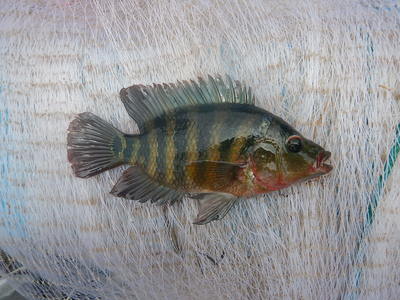Interdisciplinary - Collaborative Research
The Montana Lab at SFASU, The Riverscape Lab (www.riverscapeecology.org/) and Systematic Ichthyology Lab (sites.google.com/site/conwaykw) at Texas A&M University are collaborating in long-term (2023-2026) collaborative research in East Texas rivers studying the Fish biodiversity in Neches and Sabine River basins, Texas. Project funded by the Texas Comptroller Office.
The Montana Lab at SFASU, The Riverscape Lab (www.riverscapeecology.org/) and Systematic Ichthyology Lab (sites.google.com/site/conwaykw) at Texas A&M University are collaborating in long-term (2023-2026) collaborative research in East Texas rivers studying the Fish biodiversity in Neches and Sabine River basins, Texas. Project funded by the Texas Comptroller Office.
The Montana Lab at SFASU is collaborating on a NSF (National Science Foundation)-funded Collaborative Research project: Track 1, IRES sites: International Research Experience for Students in Freshwater Ecosystems at the Epicenter of Neotropical Biodiversity, Guiana Shield, Guyana (South America).
For more information, visit the NSF website.
The Montana Lab at SFASU is collaborating with Texas Parks and Wildlife Department and Texas A&M Commerce University in a funded Research project (2022-2024) investigating the Conservation status and life history of imperiled fish species in East Texas streams.
The Montana Lab is collaborating with researchers at University of North Texas in a funded project by the Office of Comptroller Texas titled: Population assessment of Smalleye (Notropis buccula) and Sharpnose (Notropis oxyrhynchus) shiners in the Brazos River and data-driven recommendations for a long-term monitoring.
Research Areas:
Community-Ecosystem Ecology
Community-Ecosystem Ecology
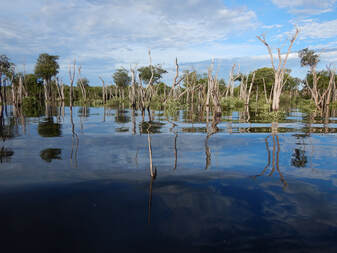 Floodplain forest in Rio Negro-Amazon River. Brazil. Spring 2019.
Floodplain forest in Rio Negro-Amazon River. Brazil. Spring 2019.
River/Stream Ecosystems:
Fish assemblages in freshwater systems are influenced by a large number of ecological factors that operate over multiple ecological scales.
The Montana lab at SFASU uses fish species as model organisms to:
1) test theories of local assembly from regional species pools and theories of species packing within habitat patches.
2) investigate the relative importance assembly processes such as environmental filtering versus limiting similarity in structuring species assemblages at different spatial (Continental, Regional, locally) and temporal (seasons).
3) investigate changes in population dynamics over time.
4) gather data that contribute to the baseline fish assessments and fill gaps to better understand the range of distribution of species, areas of occupancy, and their relative abundance in river watersheds.
Currently, The Montana Lab is researching in freshwater ecosystems in temperate and tropical regions. In Texas, Dr. Montaña Lab is working on severla projects involving the conservation status of imperiled fish species in streams and rivers of the Pinewood (East Texas) and Rolling Plains (North Texas) ecoregions. Her international research is conducted in Guyana, South America, where she is researching the impacts of mercury contamination in freshwater ecosystems and fish biodiversity. Her research program seeks to test and advance ecological concepts, that will help to maintain direct applications for solving problem in conservation biology and sustainable use of natural resources.
Fish assemblages in freshwater systems are influenced by a large number of ecological factors that operate over multiple ecological scales.
The Montana lab at SFASU uses fish species as model organisms to:
1) test theories of local assembly from regional species pools and theories of species packing within habitat patches.
2) investigate the relative importance assembly processes such as environmental filtering versus limiting similarity in structuring species assemblages at different spatial (Continental, Regional, locally) and temporal (seasons).
3) investigate changes in population dynamics over time.
4) gather data that contribute to the baseline fish assessments and fill gaps to better understand the range of distribution of species, areas of occupancy, and their relative abundance in river watersheds.
Currently, The Montana Lab is researching in freshwater ecosystems in temperate and tropical regions. In Texas, Dr. Montaña Lab is working on severla projects involving the conservation status of imperiled fish species in streams and rivers of the Pinewood (East Texas) and Rolling Plains (North Texas) ecoregions. Her international research is conducted in Guyana, South America, where she is researching the impacts of mercury contamination in freshwater ecosystems and fish biodiversity. Her research program seeks to test and advance ecological concepts, that will help to maintain direct applications for solving problem in conservation biology and sustainable use of natural resources.
Pond Ecosystems:
Ponds are biodiversity “hotspots” within the landscape that have the capacity to support a greater biodiversity of aquatic macroinvertebrates, amphibians, fishes and macrophytes, as well as higher proportions of rare and endemic species. Currently, the Montaña Lab is surveying several ponds along environmental gradients (hydrology, season, and microhabitat types) to disentangle the environment factors driving aquatic diversity across local and landscape scales. The Montaña Lab is particularly interest in 1) quantifying both environmental factors and species diversity (alpha, beta, and gamma diversity), 2) using a functional trait approach to compare the diversity across ponds. Examining organism’s traits in addition to taxonomic characteristics of the communities will yield a more complete understanding of hydrology-ecology relationships as traits are the means by which organisms interact with and adapt to their environment. 3) evaluating pond food webs and the importance of amphibian larvae for nutrients transport from ponds to forest ecosystems.
Ponds are biodiversity “hotspots” within the landscape that have the capacity to support a greater biodiversity of aquatic macroinvertebrates, amphibians, fishes and macrophytes, as well as higher proportions of rare and endemic species. Currently, the Montaña Lab is surveying several ponds along environmental gradients (hydrology, season, and microhabitat types) to disentangle the environment factors driving aquatic diversity across local and landscape scales. The Montaña Lab is particularly interest in 1) quantifying both environmental factors and species diversity (alpha, beta, and gamma diversity), 2) using a functional trait approach to compare the diversity across ponds. Examining organism’s traits in addition to taxonomic characteristics of the communities will yield a more complete understanding of hydrology-ecology relationships as traits are the means by which organisms interact with and adapt to their environment. 3) evaluating pond food webs and the importance of amphibian larvae for nutrients transport from ponds to forest ecosystems.
Urban Ecology: Fish community and food webs in urban gradients
|
|
Anthropogenic land changes associated with urbanization is an important threat facing aquatic ecosystems today. Urban ecology research in the Montaña Lab focus on understanding the effects of urbanization in stream biota, food web dynamics, and overall ecosystem structure and function. We combine different qualitative and quantitative techniques (e.g., taxonomy, functional traits, stable isotope analysis, dietary analysis, and ecological stoichiometry) and land uses based on GIS data to address the following questions in urban environments:
1) How do stream communities (species diversity and abundance) vary along gradients of urbanization? Does urbanization affect both taxonomic and functional diversity? 2) Does urbanization cause homogenization in local communities? Urbanization can homogenize the range of environmental conditions species experience at local scales causing environmental filtering. My lab uses taxonomic and morphological-trait approaches to investigate whether ecological communities are more similar to each other than nearby native communities. 3) Is there a relationship between basal resources, consumer isotopic composition (𝛿13C and 𝛿15N) and degree of urbanization; does consumer elemental composition vary as a function of species identity and body size? Early research in urban streams was conducted in Raleigh (NC), one of the fastest growing cities in the United States. We surveyed fishes in Piedmont streams with different degrees of urbanization to evaluate extrinsic (stream type) and intrinsic (species identity, body size) factors that may drive variation in isotopic (𝛿13C and 𝛿15N) and elemental composition of fishes (Montaña & Schalk 2018). Our results suggest that both isotopic and elemental composition of basal resources and consumers varied along an urbanization gradient suggesting that such variation might reflect changes in stream properties. Ongoing research in urban streams in East Texas : In collaboration with Christopher Schalk and Dave Peterson at US Forest Service Nacogdoches (TX), we are using historical (from 1990) and contemporary data of fish communities to predict changes in urban freshwater communities along a longitudinal gradient in La Nana Creek watershed, Nacogdoches (TX). Furthermore, we are beginning to explore the effects of nonnative fish species (tilapia) in urban streams and ecological impacts in native communities. |
Food Webs and Trophic Ecology
Food web dynamics along the longitudinal gradient of the Usumacinta River (Mexico): a floodplain river in Mesoamerica region
In collaboration with Rocio Rodiles (ECOSUR) and Miriam Soria-Barreto (ECOSUR), and Kirk Winemiller (TAMU), we are investigating the spatial variation in aquatic food web structure in the Rio Usumacinta during a hydrological cycle. The The Usumacinta River, one of the largest rivers in Mesoamerica, hosts a high diversity of fishes including a large number of endemic species. We are analyzing stable isotope ratios of Carbon (13δC) and Nitrogen (15δN) to estimate 1) the importance of basal production sources supporting fish biomass and other faunal components,2) vertical structure of trophic position of consumer taxa, and 3) principal trophic pathways in aquatic food webs. These aspects of food web structure are being compared among locations along the longitudinal fluvial gradient and in relation to lateral gradients (floodplains and channel). This project is funded by El Colegio de La Frontera Sur (ECOSUR), Chiapas, Mexico.
In collaboration with Rocio Rodiles (ECOSUR) and Miriam Soria-Barreto (ECOSUR), and Kirk Winemiller (TAMU), we are investigating the spatial variation in aquatic food web structure in the Rio Usumacinta during a hydrological cycle. The The Usumacinta River, one of the largest rivers in Mesoamerica, hosts a high diversity of fishes including a large number of endemic species. We are analyzing stable isotope ratios of Carbon (13δC) and Nitrogen (15δN) to estimate 1) the importance of basal production sources supporting fish biomass and other faunal components,2) vertical structure of trophic position of consumer taxa, and 3) principal trophic pathways in aquatic food webs. These aspects of food web structure are being compared among locations along the longitudinal fluvial gradient and in relation to lateral gradients (floodplains and channel). This project is funded by El Colegio de La Frontera Sur (ECOSUR), Chiapas, Mexico.
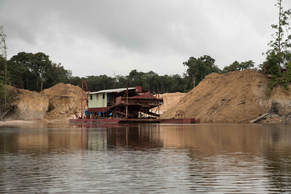 Gold mining dredge in the Mazaruni River, Guyana. Spring 2018.
Gold mining dredge in the Mazaruni River, Guyana. Spring 2018.
Gold Mining in Fish Diversity and Food Webs Dynamics in the Mazaruni River Basin, Guyana
In collaboration with Elford Liverpool (University of Guyana) and Donald Taphorn (ROM) we are assessing fish diversity, mercury concentrations and bioaccumulation in freshwater food webs in the Mazaruni River, a poorly surveyed basin in Guyana. The Mazaruni River, within the Guiana Shield in South America, hosts immense freshwater fish diversity with high species endemism. The Mazaruni is of high conservation priority because its fishes represent a clear example of a threatened endemic freshwater fauna and the river is highly threated by increasing anthropogenic activities (e.g., gold mining). We are using stable isotopes analysis (13C and 15N) and mercury analysis (total mercury [THg] and methylmercury [MeHg]) to allow for inferences to be made about factors that influences MeHg bioaccumulation through the aquatic food web. We will measure mercury concentrations and trophic position on fishes, and we will target fish species that are important food resources for Amerindian communities. We will compare results of mercury concentration and stable isotope analysis between mined and non-mined sites at each river reach. Results from this study will help us to better understand habitat requirement needs for fishes in areas that are degraded by mining activities when compared to non-mined sites along the Mazaruni basin. This project is funded by the World Wildlife Fund (WWF).
In collaboration with Elford Liverpool (University of Guyana) and Donald Taphorn (ROM) we are assessing fish diversity, mercury concentrations and bioaccumulation in freshwater food webs in the Mazaruni River, a poorly surveyed basin in Guyana. The Mazaruni River, within the Guiana Shield in South America, hosts immense freshwater fish diversity with high species endemism. The Mazaruni is of high conservation priority because its fishes represent a clear example of a threatened endemic freshwater fauna and the river is highly threated by increasing anthropogenic activities (e.g., gold mining). We are using stable isotopes analysis (13C and 15N) and mercury analysis (total mercury [THg] and methylmercury [MeHg]) to allow for inferences to be made about factors that influences MeHg bioaccumulation through the aquatic food web. We will measure mercury concentrations and trophic position on fishes, and we will target fish species that are important food resources for Amerindian communities. We will compare results of mercury concentration and stable isotope analysis between mined and non-mined sites at each river reach. Results from this study will help us to better understand habitat requirement needs for fishes in areas that are degraded by mining activities when compared to non-mined sites along the Mazaruni basin. This project is funded by the World Wildlife Fund (WWF).
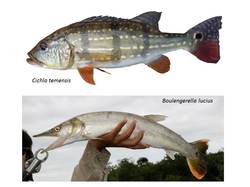
Gape size influences seasonal patterns of piscivore diets in three Neotropical rivers
With several collaborators, I have examined feeding ecology, diet-morphology correlations, and food web structure of fish communities.
We have used Neotropical piscivores (Cichla and Boulengerella spp.) to test whether prey size varied with predator gape width, and have explored how gape limitations may mediate seasonal patterns of predator-prey dynamics. Our findings (Montaña, Layman & Winemiller 2011) suggested that Cichla spp. consumed large prey species at the start of the falling-water period, when larger migratory fishes (e.g. Semaprochilodus kneri) were abundant, but prey size decreased as large prey became depleted during the dry season. For Boulengerella spp., gape limitation precluded consumption of larger, seasonally abundant, fishes, and so prey sizes were more consistent throughout the seasonal cycle.
With several collaborators, I have examined feeding ecology, diet-morphology correlations, and food web structure of fish communities.
We have used Neotropical piscivores (Cichla and Boulengerella spp.) to test whether prey size varied with predator gape width, and have explored how gape limitations may mediate seasonal patterns of predator-prey dynamics. Our findings (Montaña, Layman & Winemiller 2011) suggested that Cichla spp. consumed large prey species at the start of the falling-water period, when larger migratory fishes (e.g. Semaprochilodus kneri) were abundant, but prey size decreased as large prey became depleted during the dry season. For Boulengerella spp., gape limitation precluded consumption of larger, seasonally abundant, fishes, and so prey sizes were more consistent throughout the seasonal cycle.
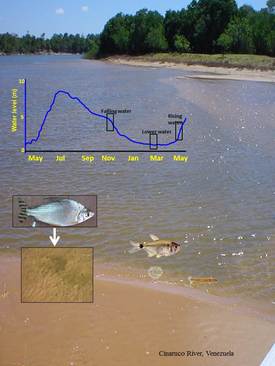
Pulsing hydrology determines top-down control of basal resources by fish and meiofauna in a tropical river-floodplain ecosystem.
Previous experimental studies in the Cinaruco River (Venezuela) have revealed that benthic feeding fishes can regulate abundance of particulate organic matter on hard substrates. Together with Kirk Winemiller and collaborators (Winemiller et al. 2014), we conducted field experiments that employed large number replicates to estimate effects of fish on organic matter accumulation on sand compared to hard substrates, as well as the extent that migratory and resident fishes have on algae and meiofauna assemblages within the main channel and connected floodplain lagoons during three different phases of the annual hydrologic cycle of a floodplain river in Venezuela. Our findings suggest that fish controlled the abundance of particulate organic matter and algae on solid substrates, but not on sand, during falling and low water phases within both channel and floodplain habitats. The taxonomic structure of algal and meiofauna assemblages were not significantly influenced by fish exclusion treatments. However, they varied in relation to habitat type and hydrologic phase, and meiofauna densities were highest during the low-water period; experimental exclusion of meiofauna during this period had a significant effect on accumulation of particulate organic matter in sand.
Previous experimental studies in the Cinaruco River (Venezuela) have revealed that benthic feeding fishes can regulate abundance of particulate organic matter on hard substrates. Together with Kirk Winemiller and collaborators (Winemiller et al. 2014), we conducted field experiments that employed large number replicates to estimate effects of fish on organic matter accumulation on sand compared to hard substrates, as well as the extent that migratory and resident fishes have on algae and meiofauna assemblages within the main channel and connected floodplain lagoons during three different phases of the annual hydrologic cycle of a floodplain river in Venezuela. Our findings suggest that fish controlled the abundance of particulate organic matter and algae on solid substrates, but not on sand, during falling and low water phases within both channel and floodplain habitats. The taxonomic structure of algal and meiofauna assemblages were not significantly influenced by fish exclusion treatments. However, they varied in relation to habitat type and hydrologic phase, and meiofauna densities were highest during the low-water period; experimental exclusion of meiofauna during this period had a significant effect on accumulation of particulate organic matter in sand.
Evolutionary Ecology: Convergent Evolution in Fish Species
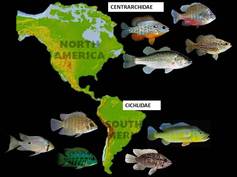
Neotropical cichlids (Cichlidae) and Nearctic sunfishes (Centrarchidae) evolved independently in different geographic regions, yet, their ecological roles in freshwater communities seem very similar. With Dr. Winemiller, I applied an integrative approach analyzing morphological traits, stomach contents, and stable isotope ratios (δ13C, δ15N) to investigate whether local assemblages of South American cichlids and North American centrarchids rexhibit one-to-one patterns of morphological and ecological convergence. Consistent patterns of ecomorphological convergence in these two perciform groups provide strong evidence for adaptation involving constraints in functional morphology associated with feeding and locomotion (Montaña & Winemiller 2013)
Description of New Fish Species
 Photo by Oliver Lucanes
Photo by Oliver Lucanes
My field work in tropical regions have resulted in the discovery of new species of fishes. Crenicichla zebrina (Montaña et al. 2008), a new species of pike cichlids (Cichlidae) from the Ventuari River, a tributary of the Orinoco River in southern Venezuela. Crenicichla zebrina is the first species of the acutirostris group recorded for the Orinoco River drainage. Crenicichla zebrina is so far known only from the lower Ventuari River, the largest clearwater tributary river of the upper Orinoco. Although it is expected that the species is present also in the middle and upper Ventuari River, it is unclear how far the distribution extends.

Our 2010 ichthyological expedition to the Mekong River in Cambodia resulted in the discovery of a new miniature loach Schistura diminuta from the lower Sekong River (Ou, Montaña, Winemiller & Conway 2011).
Schistura diminuta is clearly a miniature species (with mature individuals at less than 19.0 mm SL) and the smallest species of Schistura described to date.
